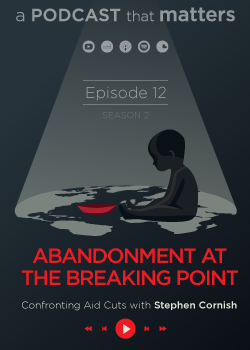Print

Enhancing Resilience to Flooding in Gilgit-Baltistan, Pakistan using a mobile flood barrier called SLAMDAM
Details
Locations:Pakistan
Start Date:Sep 1, 2021
End Date:Aug 1, 2022
Contract value: EUR 300,000
Sectors: Disaster Reduction, Environment & NRM, Gender, Inst. Devt. & Cap. building, Monitoring & Evaluation
Categories:Consulting services
Funding Agencies:
Date posted:Feb 28, 2024
Description
Description: Background to Pilot
SLAMDAM is a mobile flood barrier made out of EPDM (a synthetic rubber). The flood barrier is rapidly built up by filling it with water. With merely two persons, you can build up a barrier of 100 meter in 1 hour.
The pilot entailed the deployment of SLAMDAM alongside the Hanzu river that flows through Passu in Gilgit-Baltistan. This river overflows periodically due to seasonal melt water from the nearby glaciers. SLAMDAM was deployed by the local flood response team to demonstrate its workings and to prevent flooding caused by the overflow of the river.
The overall goal of the project was to determine whether SLAMDAM is a scalable climate adaptive solution that can help Pakistan, and other countries in South Asia, enhance resilience to the negative impacts of climate change in the water sector. This goal resulted in two key objectives of the pilot, namely to:
- Demonstrate SLAMDAM as an effective solution to adapt to climate change by enhancing resilience and reducing vulnerabilities to (climate change-induced) floods in Gilgit-Baltistan in Pakistan.
- Enhance capabilities of local people and institutions to manage risk of floods independently using flood resilient measures.
This project contributes to the overall goals of innovation in climate resilience by demonstrating the effectiveness of a climate adaptive solution that is not business-as-usual and has the potential to be scaled up. The success of this project is an important step in realizing the goal of innovation in climate resilience in the water sector for Pakistan.
Projects are as a rule community-driven, however they required involvement of different parties in the public and private sector across different layers of the society. An important co-benefit of SLAMDAM is to enhance collaboration between people and organisations from different backgrounds. The beneficiaries are ultimately local communities who are protected from the negative impacts of (climate change-induced) floods. Notwithstanding that beneficiaries are also public officials who are tasked with enhancing resilient to climate change / floods. The private sector might also benefit when SLAMDAM reduces damages incurred by floods.
The key metrics are defined through the (i) objectives, (ii) outcomes and (iii) outputs. With each output there are identified indictors with metrics described on how to measure and monitor indicators. Indictors can be expressed in monetary or non-monetary values. For each indicator, there will be a baseline (i.e. flood event without SLAMDAM) and the target (i.e. flood event with SLAMDAM).
Implementation of SLAMDAM has an impact of the following Sustainable Development Goals (SDGs):
- SDG 5. Gender equality
- SDG 6. Clean water and sanitation
- SDG 8. Decent work and Economic Growth
- SDG 11. Sustainable cities and communities
- SDG 13. Climate Action
Long-term impacts i.e. objectives:
- Objective 1: Reduce vulnerability and increase resilience to climate-induced flooding through innovation and technology transfer for climate change adaptation.
- Objective 2: Strengthen community resilience and local capacity building to increase prosperity.
Mid-term impacts i.e. outcomes:
- Outcome 1: Weather information service solutions in combination with a mobile flood barrier piloted or deployed to reduce climate-related flood and drought risks and/or enhance resilience.
- Outcome 2: Institutional and human capacities strengthened to identify and implement adaptation measures.
Short-term impacts i.e. outputs:
- Output 1.1.1: Physical and natural assets made more resilient to climate induced flooding.
- Output 1.1.2: Livelihoods and sources of income of vulnerable populations diversified and strengthened.
- Output 1.1.3: The number of people who are warned of climatic induced floods and drought grows and the warning consistency and reliability is increased.
- Output 1.1.4: Vulnerable natural ecosystems strengthened in response to climate change impacts.
- Output 2.1.1: Active, skilled, and materialised local flood and drought response team
- Output 2.1.2: Number of people trained and informed regarding climate change impacts and appropriate adaptation responses.
Conclusion
The original project objectives have been realised seeing as the innovative flood barrier called SLAMDAM has been manufactured and deployed at the pilot location. The flood barrier is currently preventing floods seeing as water levels have already risen.
The local community has been trained well and knows how to operate the mobile flood barrier independently. The community is satisfied with this solution, and they are already exploring locations in the region where SLAMDAM can be deployed.
Other stakeholder groups, including potential clients, were also invited to attend the demonstration at Passu. All the attendees were impressed with the SLAMDAM-technology, and they have ideas on where to scale-up the SLAMDAM-technology across Pakistan.
Type of services provided:
- Deployment of SLAMDAM, a mobile flood barrier to prevent flooding.
- Flood consultancy services.
- Flood intelligence services including hydrodynamic modelling.
- Data driven flood risk assessments.
- Capacity building and training.
- Monitoring and Evaluation
- Gender assessments.
- Environmental and Social Impact Assessments.
Name of client: Asian Disaster Preparedness Center

